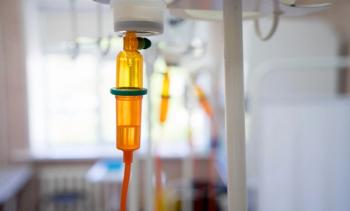
COVID-19 Linked to 3% to 5% Increase in Diabetes Incidence
The risk of incident diabetes was found to be 17% greater in individuals who had COVID-19, and it was higher among men and individuals with severe COVID-19.
COVID-19 infection is linked to a significantly increased risk of
The study authors also found a higher risk of diabetes among men than women, and among those with severe disease compared with those without COVID-19.
“These findings suggest that COVID-19 infection may continue to be associated with outcomes in organ systems involved in regulating blood glucose in the postacute phase and so may have contributed to the 3% to 5% of excess incident diabetes cases found in this study,” the authors wrote.
The population-based cohort study was conducted in British Columbia, Canada, between January 1, 2020, and December 31, 2021. The authors used the British Columbia COVID-19 Cohort, a surveillance platform that integrates COVID-19 data with population-based registries and administrative data sets.
The study included a total of 629,935 individuals who were tested for SARS-CoV-2 using real-time reverse transcription-polymerase chain reaction (RT-PCR). Those who tested positive for SARS-CoV-2 (exposed) were matched with individuals who tested negative (unexposed) based on sex, age, and collection date of RT-PCR test at a 1:4 ratio. The analysis was conducted from January 14, 2022, to January 19, 2023.
The main goal of the study was to identify incident diabetes cases that occurred more than 30 days after the specimen collection date for the SARS-CoV-2 test. Identification was performed using a validated algorithm based on medical visits, hospitalization records, chronic disease registry, and prescription drugs for diabetes management.
Of the full cohort, the median (IQR) age was 32 (25.0-42.0) years, with 51.2% of the cohort being female. Of this group, 125,987 individuals were exposed to SARS-CoV-2 and 503,948 individuals were unexposed.
Over the median (IQR) follow-up period of 257 (102-356) days, incident diabetes events were observed in 608 individuals who were exposed (0.5%) and 1864 individuals who were unexposed (0.4%).
The incident diabetes rate per 100,000 person-years was significantly higher among the group that was exposed, with 672.2 incidents (95% CI, 618.7-725.6), compared with the group that was unexposed, with 508.7 incidents (95% CI, 485.6-531.8).
The risk of incident diabetes was found to be 17% greater in the exposed group than the unexposed group (HR, 1.17; 95% CI, 1.06-1.28), and 22% greater among men than women (adjusted HR, 1.22; 95% CI, 1.06-1.40). Diabetes risk was also higher among individuals with severe COVID-19 disease compared with individuals without COVID-19, including individuals admitted to the intensive care unit (ICU) (HR, 3.29; 95% CI, 1.98-5.48) or hospital (HR, 2.42; 95% CI, 1.87-3.15).
According to the authors, the fraction of incident diabetes cases attributable to SARS-CoV-2 infection was 3.41% (95% CI, 1.20%-5.61%) overall, and 4.75% (95% CI, 1.30%-8.20%) among men.
According to the authors, this could potentially be due to sex-specific immune responses such as higher SARS-CoV-2 IgG antibody serum concentrations in female patients compared with male patients. However, when they restricted the sample to individuals with a COVID-19 hospitalization and ICU admission, the authors observed not only a greater increase in risk among higher-severity groups, but also significant associations among both male and female patients. These findings are consistent with previous studies, which have reported mixed results.
While the overall results were consistent with several prior studies that identified an increased risk of incident diabetes after SARS-CoV-2 infection, the actual increase in risk was lower in this analysis compared with others.
One study used the national databases from the US Department of Veterans Affairs (VA) and found a 40% higher risk of incident diabetes among COVID-19 survivors who survived for at least 30 days, compared with individuals in the control group, over a median follow-up of 352 days (HR, 1.40; 95% CI, 1.36-1.44). However, it should be noted that the VA population in that study was predominantly male with a higher median age, whereas the current study population was more diverse in terms of age and sex. There were also differences in racial and ethnic representation between the VA population and the current study population, as well as differences in overweight and obesity prevalence in the US population, which may impact the findings.
When differentiating between diabetes type—insulin dependent and not insulin dependent—COVID-19 was associated only with non–insulin-dependent disease.
“However, we may be limited by the small number of insulin-dependent diabetes events in our sample,” the authors noted. “Regarding this finding, we are not able to draw a conclusive comparison with previous studies given that they classified diabetes as type 1 or type 2 based on single International Statistical Classification of Diseases and Related Health Problems, Tenth Revision (ICD-10) codes.”
The limitations of the study include potential residual confounding due to unmeasured covariates, such as obesity status and physical activity level, as well as the possibility of surveillance bias and incomplete accounting for health care access and use. Additionally, misclassification of COVID-19 exposure and false-negative results could have affected the results.
“Our study highlights the importance of health agencies and clinicians being aware of the potential long-term consequences of COVID-19 and monitoring people after COVID-19 infection for new-onset diabetes for timely diagnosis and treatment,” the authors concluded.
Reference
Naveed Z, Velásquez García HA, Wong S, et al. Association of COVID-19 infection with incident diabetes. JAMA Netw Open. Published online April 18, 2023. doi:10.1001/jamanetworkopen.2023.8866
Newsletter
Stay ahead of policy, cost, and value—subscribe to AJMC for expert insights at the intersection of clinical care and health economics.









































